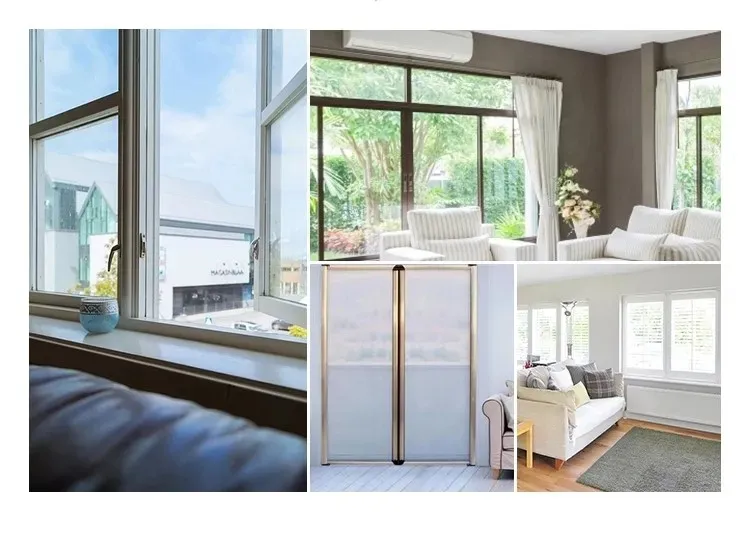Nov . 15, 2024 10:43 Back to list
temporary safety fence
The Importance of Temporary Safety Fences in Construction Sites
In the ever-evolving landscape of urban development, safety is paramount, especially within construction sites. One of the most effective tools for ensuring this safety is the temporary safety fence. These fences serve as a vital barrier between the chaotic world of construction and the general public, minimizing risks and enhancing security.
Understanding Temporary Safety Fences
Temporary safety fences are physical barriers erected around construction sites to protect both workers and the public from potential hazards. Made from durable materials such as chain link, mesh, or solid panels, these fences can be quickly installed and removed as the project progresses. Their primary purpose is not only to keep unauthorized individuals out but also to prevent accidents and injuries resulting from falling debris or hazardous materials.
Key Benefits
1. Enhanced Security One of the most significant advantages of using temporary safety fences is the increased security they provide. They deter trespassers, vandals, and potential thieves from entering the site, thus protecting valuable equipment and materials. The presence of a fence sends a clear message that the area is restricted, which can help in reducing theft and vandalism.
2. Public Safety Construction sites are inherently dangerous places. The presence of heavy machinery, uneven ground, and high demolition activities poses a risk not just to workers but also to nearby pedestrians. Temporary safety fences help to create a safe boundary, ensuring that people stay at a safe distance from hazardous zones. By preventing unauthorized access, these fences significantly reduce the likelihood of accidents involving the public.
temporary safety fence

3. Compliance with Regulations Many local and national regulations require construction sites to be secured adequately. By installing temporary safety fences, contractors can ensure they meet safety compliance standards. This not only protects the public and workers but also helps avoid potential fines and legal issues associated with non-compliance.
4. Project Integrity A well-fenced construction site presents a more professional image. It conveys responsibility and a commitment to safety, which can enhance the reputation of the contracting company. Additionally, a confined work area allows for better organization and workflow, making it easier to manage resources and personnel effectively.
Types of Temporary Safety Fences
There are various types of temporary safety fences to choose from, depending on the specific needs of a construction site. Chain link fences, for instance, are widely used due to their durability and visibility. They allow for strong barricades while providing visibility into the site itself. Solid panel fences, on the other hand, provide more privacy and are effective for sites requiring soundproofing.
Some innovative options include modular fencing systems, which are designed for quick installation and can be easily adjusted to fit different site layouts. The choice of fencing material and type ultimately depends on factors such as the nature of the project, duration, and specific safety requirements.
Conclusion
In conclusion, temporary safety fences are an indispensable component of construction site management. They play a critical role in enhancing safety, ensuring regulatory compliance, and protecting both the workforce and the public. By investing in quality fencing solutions, construction companies demonstrate their commitment to safety and professionalism, laying a solid foundation for successful project completion. In an industry where safety cannot be compromised, the importance of temporary safety fences cannot be overstated.
-
Hop Dipped Galvanized/PVC Coated Temporary Fence - Anping County Xingzhi Metal Wiremesh Products Co., Ltd.|Temporary Fencing Solutions, Durable Security Products
NewsJul.30,2025
-
Hop Dipped Galvanized/PVC Coated Temporary Fence-Anping Xingzhi|Durability&Cost-Effective
NewsJul.30,2025
-
Hop-Dipped Galvanized PVC Fence - Anping Xingzhi | Durable, Quick Deployment
NewsJul.30,2025
-
Hop Dipped Galvanized/PVC Coated Temporary Fence - Anping County Xingzhi|Temporary Fencing, Durable Security, Customization
NewsJul.30,2025
-
Hop Dipped Galvanized PVC Coated Temporary Fences - Anping County Xingzhi|Durable Corrosion Resistance, Quick Installation
NewsJul.30,2025
-
Hop Dipped Galvanized / PVC Coated Temporary Fence - Anping County Xingzhi Metal Wiremesh Products Co., Ltd|Durable Temporary Fencing&Versatile Applications
NewsJul.30,2025



